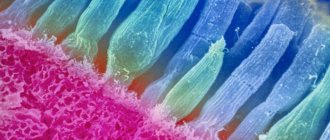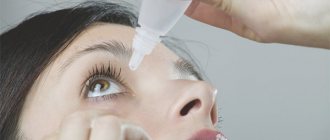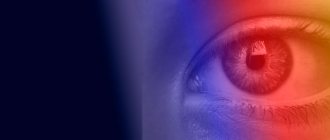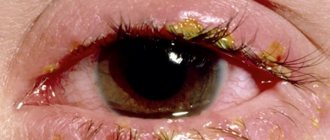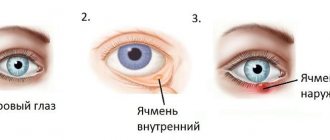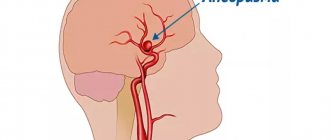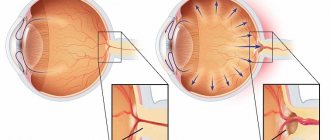People who are sensitive to light and have some symptoms such as headaches and eye pain when exposed to very light or bright environments may have photophobia (photophobia).
Contrary to what some people think, photophobia is not a disease, but rather a symptom of other health problems, such as infection or inflammation, that can irritate the eyes. In addition to explaining what photophobia is, below we will look at the causes and treatments available to alleviate this symptom.
What is photophobia?
Photophobia (or photophobia) is the medical term used to describe eye sensitivity to light that occurs in some people. The literal meaning of the word photophobia is “fear of light,” since “ phobia ” refers to the fear of something and “ photo ” is associated with light. However, that's not exactly what it means. Being photophobic does not mean being afraid of light, but having a very high sensitivity to light, which can cause discomfort, pain and other symptoms in a person.
This condition can be chronic or temporary and can cause various effects in both the adult and child suffering from such high sensitivity to light.
It's not just sunlight that bothers people with photophobia. Other light sources, such as fluorescent or incandescent lamps, may also cause discomfort. Typically, stronger, brighter light is what bothers you the most, but some people can feel extremely uncomfortable even in dim light.
Other causes of photophobia
Increased light sensitivity of the retina of a neurological nature deserves special attention. The head is painfully dizzy from bright light during infectious diseases: encephalitis or meningitis. Possible serious pathologies:
- cerebral vascular stroke of various origins;
- complications after traumatic brain injuries (the head in the forehead or back of the head hurts periodically or constantly);
- benign neoplasms in the cerebral cortex (an increasing feeling of pressure in the head is accompanied by dizziness and nausea).
Fear of light often occurs when:
- migraine;
- hypertension;
- trigeminal neuralgia;
- strong neuroses;
- ENT diseases (inflammation of the internal parts of the nose);
- ARVI and other colds.
How does photophobia occur?
Light is important for us to be able to see our surroundings, especially at night, since our eyes are not designed to see in dark places.
For us to see, light must bounce off objects and be captured by the eye. Light that enters the retina goes through several processes until it reaches the brain, where the image we see is formed.
Photophobia can appear at any age and even develop with age. There are times when the quantity or quality of light can affect our ability to see. Imagine that you are driving at night in a traffic jam and pass a car with high beams on in the opposite direction to you. Quite an unpleasant situation, isn't it?
For a moment, our vision becomes dim and we cannot see well due to the very strong light. This more or less explains what happens in photophobia: the brightness of the light affects the ability to see clearly.
Another type of problem arises as we age and problems arise with the eyes. For example, when a person has a cataract, the lens of the eye becomes cloudy, allowing light to pass through it suddenly. This causes light to scatter, making it more difficult to see if the light in the room is very intense.
There is still no complete explanation of how photophobia occurs, but it is believed that the problem is related to the internal light-sensitive ganglion cells of the retina, which contain melanopsin in their composition. These cells detect light and create a sensation of brightness and can make the eye more sensitive, including causing pain.
What light causes photophobia?
Light from the sun, fluorescent lights, or computer and mobile device screens can worsen the symptoms of photophobia.
For people who work in offices, fluorescent lights double the incidence of symptoms such as headaches and migraines, according to studies. Exposure to the sun for 5-10 minutes can cause severe pain in people with light sensitivity. Additionally, patients diagnosed with concussions have reported problems when looking at LED lights and LCD screens on computers or mobile devices.
Symptoms
Although it is not a disease, there are other signs that occur at the same time and usually help identify photophobia. This:
- headache or migraine;
- dry eyes;
- eye pain when exposed to sunlight or a lit environment;
- swelling inside the eye;
- eye fatigue;
- strabismus;
- highly sensitive eyes to fluorescent lamps;
- dizziness;
- flashes, blinking in the eyes;
- inflammation.
More recent research also suggests that light exposure in already sensitive people may cause additional symptoms, which include:
- shortness of breath;
- nausea;
- tightness in the chest;
- dizziness.
There is evidence that people with photophobia are at greater risk of suffering from negative emotions such as fear, anger, anxiety and depression. Some emotional symptoms that may be experienced:
- change of mood;
- irritability;
- feeling of despair;
- signs of depression;
- aggressive behavior.
What symptoms should you see a doctor for?
The occurrence of painful sensations from light in infectious diseases is a normal reaction of the body to irritation of the optic nerve. After mild traumatic brain injuries, mechanical damage to the organs of vision, everyone has a headache either constantly or occasionally.
After forty years, the aging process of the eyeball begins, the lens becomes thinner, and its contents become cloudy. If the frontal part hurts from eye strain, you should consult an ophthalmologist to exclude the possibility of eye pathologies.
Unilateral paroxysmal pain is neurological in nature. If there is an acute reaction to daylight, pain in the occipital or frontal part of the head, nausea appears, coordination in space is impaired, a consultation with a neurologist is needed.
Interesting: Headache after a long sleep: causes, prevention, treatment
Risk factors
Anyone who already has sensitive eyes for some reason may be more susceptible to photophobia. Here are some of these factors:
– Eye color.
People with lighter eyes are at greater risk of photophobia because fewer pigments cause light rays to scatter less effectively, making the eyes more sensitive to light.
– Visual impairment.
People with severe vision problems and even blind people may experience some photophobia.
In addition, people with photophobia have a higher risk of developing conjunctivitis, iritis (inflammation of the iris), albinism (a condition in which a person has little pigmentation), and general color deficiency, a condition in which only a few shades of gray are visible.
Finally, there are also people who were already born with this problem and are sensitive to light from infancy.
Ocular causes of discomfort in the eyes
Poor quality contact lenses for the eyes cause pain. The occipital or temporal parts of the head hurt.
When there is unbearable pain in the eye area from bright light, the causes of the syndrome are often ophthalmological diseases or mechanical damage:
- the entry of foreign particles into the cornea causes inflammation (keratitis);
- injuries;
- burns from radiation from welding machines;
- vascular pathologies (uveitis);
- irritation of the iris of the eyeball (iritis, iridocyclitis);
- damage to the retina, its detachment from the vascular fundus;
- pustules on the outer or inner parts of the eyelids;
- inflammation of the mucous membrane of the eye.
Interesting: How does a headache occur with sinusitis: symptoms, treatment, first aid
Causes
Photophobia is not considered a disease, but is a symptom of other health problems, such as infections or inflammation, that affect the eyes. The best way to deal with photophobia is to periodically visit an ophthalmologist and treat its causes.
In fact, photophobia is a neurological problem that involves the communication system between the eye and the brain, not just the eye. The part of the eye that sends the light sensitivity signal to the brain is different from the part that transmits vision, which is why some people, even if they are blind, may suffer from photophobia.
Conditions that affect the brain and may cause photophobia as a symptom include:
- Encephalitis . Encephalitis occurs when the brain becomes inflamed due to an infection, which may be viral or bacterial. If not treated quickly, the disease can be fatal.
- Meningitis Meningitis is an infectious disease caused by bacteria that causes inflammation of the membranes surrounding the spinal cord and brain. The disease can also cause serious complications such as hearing loss, brain damage, seizures and even death.
- Subarachnoid hemorrhage . Subarachnoid hemorrhage occurs when there is bleeding between the brain and layers of surrounding tissue. This bleeding can cause brain damage, stroke, or death.
Severe brain injuries, pituitary tumors, and supranuclear palsy can also cause photophobia.
Photophobia is also very common due to the following conditions that affect eye health:
- Abrasions on the cornea of the eye . Corneal abrasions and scratches are damage to the cornea, the outermost layer of the eye. This type of injury occurs when small particles such as dirt, sand or other substances get into the eyes. This buildup of intrusive particles can cause a very serious problem called a corneal ulcer.
- Scleritis . Scleritis is characterized by inflammation of the white part of the eye. This problem mainly affects adults between 30 and 50 years of age, especially women. In most cases, scleritis is caused by pre-existing autoimmune diseases and also causes symptoms such as eye pain, photophobia, watery eyes and blurred vision.
- Conjunctivitis . Conjunctivitis occurs when the layer of tissue covering the white part of the eye becomes infected or inflamed. This infection is most often caused by viruses, but it can also be caused by bacteria or allergies. In addition to photophobia, conjunctivitis can cause itchy, painful, and red eyes.
- Dry eye syndrome . This disease is characterized by problems with tear ducts that cannot produce enough tears to lubricate the eyes or that produce poor quality tears. This results in the eyes remaining extremely dry.
Other health conditions such as iritis, cataracts, macular degeneration, keratitis, uveitis and blepharospasm may also present photophobia as one of its symptoms.
- Migraine . Sensitivity to light is a common symptom of migraines. About 80% of people with migraines experience sensitivity to light. Migraines can be caused by many factors, such as hormonal changes, diet, stress, and even environmental changes. When migraines cause very severe headaches, symptoms include throbbing in the head, photophobia, nausea and vomiting.
- Mental health problems . Some people with mental health problems such as agoraphobia, depression, bipolar disorder, anxiety and panic attacks may also experience photophobia.
- Operation . There is evidence that some surgeries to correct vision problems may also make the patient more sensitive to light than before.
- Medications . Some types of medications present photophobia as one of its side effects. Some of these include antibiotics such as doxycycline and tetracycline, furosemide, which is used to treat heart failure, kidney or liver disease, antihistamines, estrogen-containing oral contraceptives, nonsteroidal anti-inflammatory drugs, sulfonamides, tricyclic antidepressants, and quinine, which is used to treat malaria .
- External damage . Photophobia can also be caused by problems such as retinal detachment, improper or prolonged contact lens wear, and sunburn.
Neurasthenia
The most common symptom of neurasthenia is headache. It is diffuse in nature and usually occurs at the end of the day. A characteristic feeling is a feeling of pressure on the head, as if the head is being squeezed by a heavy helmet (“neurasthenic helmet”). The second complaint of patients with neurasthenia is dizziness, which consists of a feeling of rotation in the head, but is not accompanied by a feeling of rotation of surrounding objects. Often such dizziness occurs during severe anxiety, physical exertion, weather changes, etc. Symptoms associated with cardiovascular disorders are typical: increased heart rate (tachycardia), palpitations, pressing or stabbing pain in the heart area, arterial hypertension, redness or paleness of the skin covers. They can appear at the slightest excitement of the patient, even during a lively conversation.
With neurasthenia, dyspeptic symptoms are possible: heartburn, loss of appetite, belching. Heaviness in the stomach, flatulence, causeless diarrhea or constipation. Patients may have a frequent urge to urinate (pollakiuria), which becomes more frequent with excitement and goes away at rest. Sexual desire is often reduced. In men, premature ejaculation occurs, leading to a reduction in the time of sexual intercourse, which creates a feeling of weakness and dissatisfaction in patients.
The hypersthenic form of neurasthenia is manifested by increased irritability, emotional lability and high excitability. Patients easily lose their temper, shout at colleagues or relatives, often show impatience, cannot control themselves and can even insult others. They are irritated by extraneous noise, conversation, any sound, large crowds of people or their rapid movement. A decrease in performance is typical, and this occurs not so much due to fatigue, but due to the primary weakness of active attention: absent-mindedness and lack of concentration, the inability to “get involved” in work and concentrate on the task at hand. Having started work, a patient with neurasthenia is not able to withstand the mental stress necessary to complete it for a long time and is easily distracted (often gets up from the table, leaves his workplace, reacts to extraneous sounds and actions of colleagues). After such a distraction, it is difficult for him to start working again. This is repeated many times during the working day and as a result the person does not have time to do anything. Patients also complain of sleep disturbances in the form of problems falling asleep, frequent awakenings at night, and disturbing dreams associated with daytime experiences. The result is a difficult morning awakening without a feeling of rest, a unclear head, bad mood, and a constant feeling of fatigue and weakness. Such a morning state of patients with neurasthenia may improve somewhat in the evening. Characterized by a pressing headache (“neurasthenic helmet”) or a constant feeling of heaviness in the head, memory impairment, and a feeling of discomfort in various areas of the body.
Irritable weakness is the second phase of neurasthenia, which occurs in persons of choleric temperament or people with a balanced, strong type of nervous system in cases where recovery has not occurred at the first stage, and the action of the pathogenic factor continues. The patient still has strong irritability, but it quickly fades and is replaced by mental exhaustion. Patients are easily excited and scream, but this initial reaction is replaced by a feeling of powerlessness and resentment and often turns into crying. Mental reactions with opposite emotional states arise for any, even the most trifling, reason. In the second phase of neurasthenia, the patient has great difficulty in starting any task or work; he is unable to concentrate. Trying to concentrate on some activity, he quickly gets tired, the headache gets worse and he cannot clearly think about what he is doing. Increasing general and nervous weakness forces him to quit the job he started with a feeling of complete powerlessness. After some time, the patient again tries to take up work, but due to nervous exhaustion he quits again. Breaks between such attempts to work do not improve the situation, since they do not bring mental rest to the patient. Therefore, repeated attempts to work can bring a patient with neurasthenia to a state of complete exhaustion.
The hyposthenic form develops as the third phase of neurasthenia. It can occur from the very beginning of the disease in asthenic, anxious and suspicious people with a weak type of nervous system. This form or phase of neurasthenia is characterized by constant lethargy, physical and mental weakness, passivity, decreased mood, and lack of interests. Patients experience a feeling of sadness and some vague anxiety, but pronounced attacks of anxiety or melancholy are not typical for them. Depressed mood is combined with severe asthenia and is often manifested by emotional instability and tearfulness. Due to the feeling of constant fatigue and general weakness, patients are generally unable to get ready to begin any physical or mental work. They are focused on their internal sensations and thoughts about their condition suppress them even more. Hypochondriacal complaints about various sensations emanating from the internal organs are characteristic.
After some time, when the action of the pathological factor ceases or adequate therapy is carried out, sleep begins to be restored in those suffering from neurasthenia and recovery gradually occurs. When attacks of neurasthenia reoccur, their duration increases, and depressive states worsen.
Treatment
Once the diagnosis has been made by an ophthalmologist, which should include eye examinations and in some cases an MRI, treatment should begin immediately.
The most effective way to treat this disease is to identify the cause of photophobia. If the cause is related to the use of certain medications, it is recommended to replace the medication with a similar one that does not have this side effect. If the cause is migraine, the migraine must be treated to eliminate photophobia and so on.
Some of the available treatments include:
- prescribing medications for migraines;
- antibiotics or antivirals for conjunctivitis;
- eye drops to treat eye diseases such as scleritis;
- artificial tears for the treatment of dry eye syndrome;
- antibiotics to treat bacterial meningitis;
- surgery to remove excess blood and reduce pressure in the brain due to subarachnoid hemorrhage;
- eye antibiotics in the form of drops for the treatment of corneal abrasions;
- anti-inflammatory drugs for mild encephalitis.
Ideally, consult with an ophthalmologist to determine the best type of treatment for your case based on the cause of your photophobia.
Not all problems that cause eye sensitivity to light can be easily resolved. Therefore, if the cause cannot be identified or treatment does not help, you may need to wear special sunglasses with pink lenses called FL-41 to protect your eyes.
These lenses are tinted pink to reduce the amount of light entering the eyes, thereby reducing sensitivity to it. While this may be helpful for many people, some people experience even more sensitivity when using these special glasses. Therefore, first of all, it is important to talk to an ophthalmologist.
Other alternative forms of treatment include wearing wide-framed sunglasses with UV protection. Other possible therapies include the use of photochromic lenses, which automatically darken in light and block all ultraviolet rays, the use of polarized glasses, which provide additional protection from light reflections from water, sand and other reflective surfaces, or the use of prosthetic contact lenses, which are similarly tinted , like FL-41 glasses, reducing the amount of light entering the eyes.
Symptom therapy
Treatment of photophobia is entirely based on the cause of this symptom. This requires ophthalmological diagnosis, since many eye diseases are similar to each other. To make a diagnosis, the following studies are needed:
- Ophthalmoscopy – examination of the fundus through a previously dilated pupil.
- Biomicroscopy - examination in a special slit lamp for changes in the vitreous body and areas of the fundus.
- Perimetry - checking visual fields.
- Tonometry is the measurement of intraocular pressure.
- Gonioscopy is an examination of the corner of the eye where the iris borders the cornea.
- Pachymetry is the measurement of corneal thickness.
- Ultrasound of the eye helps to examine the transparent media of the eye when it is impossible to perform ophthalmoscopy.
- Fluorescein angiography is a study of the patency of blood vessels that supply the structures of the eye.
- Optical coherence tomography - helps to identify changes in retinal tissue.
- Electroretinography - helps to carefully study the functioning of the retina.
- Sowing the discharge from the conjunctival sac for viruses (using the PCR method), bacteria and fungi.
If, according to the results of an ophthalmological examination, a person is healthy, an examination by a neurologist is necessary. This specialist also prescribes additional studies:
- MRI of the brain;
- electrocephalography;
- Dopplerography of the vessels of the neck, which are directed into the cranial cavity.
An ultrasound of the thyroid gland, determination of hormones produced by this gland in the blood, and radiography of the lungs are also prescribed. If signs of hyperthyroidism or diabetic retinopathy are detected, treatment is carried out by an endocrinologist. If there is evidence of a tuberculous process in the cornea and conjunctiva, therapy is prescribed by a phthisiatrician.
What can you do before consulting a specialist?
We do not recommend delaying contacting a doctor, as seemingly banal photophobia may hide a malignant brain tumor that is rapidly progressing. But while you're waiting for your appointment with a doctor or for a test, you don't have to suffer from daylight. To alleviate the condition, buy polarized sunglasses, which will make it possible to reduce the dose of ultraviolet radiation entering the eye. In addition you need:
- stop rubbing your eyes;
- reduce time spent sitting at the computer;
- use Vidisik drops containing artificial tears;
- for purulent discharge, use drops with antiseptics or antibiotics: “Okomistin”, “Levomycetin drops”, “Tobradex” and others. In this case, an examination by an ophthalmologist is mandatory, since the purulent process can affect the deeper parts of the eye, which the local antiseptic “does not reach”;
- If photophobia appears as a result of a bruise, injury or burn to the eye, emergency ophthalmological assistance is needed. First, apply antiseptic drops to your eyes, apply a sterile bandage on top, and call an ambulance.
How to live well with photophobia
Having photophobia can significantly impact your quality of life if not properly treated. To cope with photophobia, in addition to proper treatment, when possible, you need to make some lifestyle changes to protect your eyes from overexposure to light. We recommend using the following tips:
- protect your eyes from the sun outside with sunglasses;
- wear sunglasses recommended only by an ophthalmologist;
- always have eye drops to prevent your eyes from drying out;
- wear a hat;
- keep the house clean so that dust particles do not scatter light;
- Reduce exposure to TV, computer and cell phone screens, and install screen filtering apps to reduce light intensity;
- When working with a computer, in addition to using light filters, take regular breaks to reduce symptoms;
- Replace or cover brightly colored furniture and objects in the home that reflect the most light;
- Replace fluorescent lamps in your home with LED ones.
Although it is more comfortable to spend most of the day in the dark, it is important to expose yourself to limited and controlled light to increase your eye tolerance. Staying in a dark room, in addition to harming social life and risking the development of anxiety disorders and depression, can worsen photophobia.
How to interpret the combination of headache and photophobia?
With photophobia, headaches can be of different types: only the frontal part hurts or there is aching in the occipital region. Less commonly, strong compression of the head occurs from the light.
Costen's syndrome (inflammation of the jaw joint) and paroxysmal hemicrania (vascular pathology of the brain) are characterized by local head pain on one side.
When not only the head hurts, but there is an increase in temperature, runny nose, nausea, the causes of the pain syndrome are infections of the cerebral cortex, ENT organs, and colds. If your head hurts from moderate lighting, the syndrome occurs for neurological reasons.
Treatment and prevention measures
Fear of light is a type of phobia; in itself, it does not require treatment. Diagnostics are necessary to identify the nature of the pain. Neurological diseases require complex therapy, which includes medications, physical procedures, and special gymnastics.
Interesting: Why do you get a headache when you are poisoned?
Ophthalmological diseases require systematic use of medications; ointments with antibiotics, vitamin complexes, and drops that stimulate tissue regeneration are prescribed. Patients are recommended to stay in darkened rooms, wear sunglasses when outdoors, and in some cases dark green filters are needed. The headache goes away after eliminating the factors causing photophobia.
